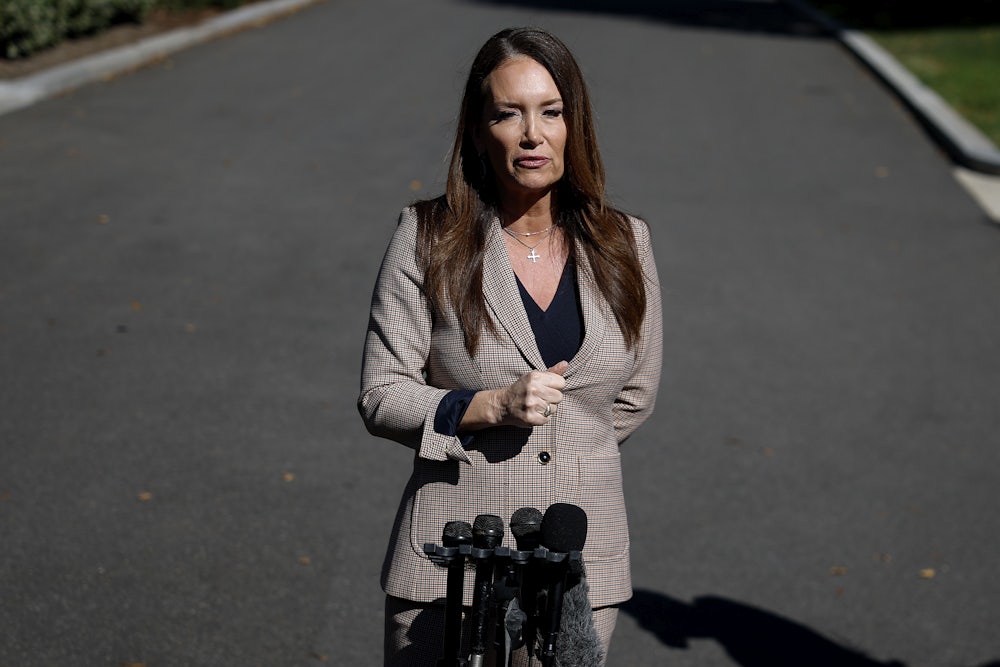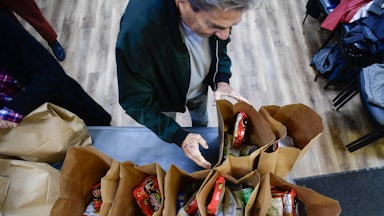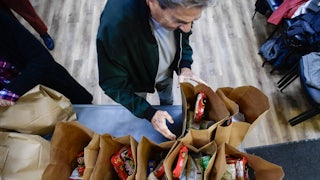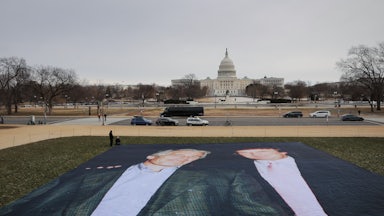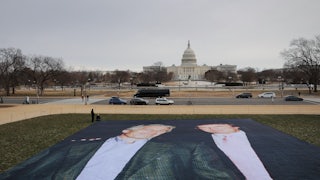Around 42 million Americans are at risk of losing access to critical nutrition assistance if the government shutdown continues into November. The Agriculture Department has warned states that there will be “insufficient funds” to continue operating the Supplemental Nutrition Assistance Program, or SNAP, formerly known as food stamps.
The USDA recently informed states in a letter that there would not be enough money to pay full benefits in November, directing state agencies to delay distributing funds to participants’ electronic benefits transfer cards for the foreseeable future. This situation differs from previous shutdowns, when the federal government had been able to continue to fully provide nutrition benefits. The 35-day shutdown that occurred during the first Trump administration ended before USDA lost its authority to issue benefits, although the agency had formed a plan for maintaining its ability to fund SNAP.
Although there are contingency funds the federal government could tap to help keep the program afloat, it’s unclear whether the Trump administration would prioritize ensuring nutrition assistance. The USDA could tap into a contingency reserve of around $6 billion, although this may not cover the full cost of benefits; in May, the last month that information is available, the cost of administering SNAP was around $8 billion. Some states have already said they will not be able to cover the cost of SNAP benefits come November.
Gina Plata-Nino, the SNAP deputy director at the Food Research and Action Center, said that Agriculture Secretary Brooke Rollins’s assertion that the program would run out of money at the end of the month was “misleading.” The program would be unable to operate if the USDA decided against using contingency funds and authorizing different funding options.
“They can find the funds from elsewhere,” said Plata-Nino. “There are other groups that they are prioritizing. This could be a priority as well. They can figure out how they get this money.”
The agency has shifted funds from tariff revenue to maintain the Special Supplemental Nutrition Program for Women, Infants, and Children, or WIC—a funding stream primarily used for school meals and other nutrition assistance programs for children—but this is likely not a sufficient source of funding to also cover SNAP benefits. Some experts theorize that the administration could also continue administering benefits by interpreting the Food and Nutrition Act to treat SNAP as an entitlement program that is not subject to the annual appropriations process, like Medicare or Social Security. In a worst-case scenario, Plata-Nino said, the administration could provide split payments, providing half of benefits at the beginning of the month and half at the end.
In economic terms, SNAP acts as an “automatic stabilizer” during times of national hardship, such as the Great Recession and the Covid-19 pandemic. More people will enroll in SNAP in periods of high unemployment and then quickly spend those benefits in grocery stores, which in turn supports the local community and helps maintain economic stability. As the need decreases, so too does SNAP participation. According to a 2019 report by the USDA, every $1 in additional spending on SNAP generates $1.54 in economic activity during a time of downturn.
Uncertainty regarding SNAP could undermine its stability, causing confusion not only for participants who may experience a delay in benefits but for retailers who would normally sell to people using their EBT cards to purchase food. This would be particularly difficult for small grocers whose “whole model is built on individuals who are falling on hard times” said Plata-Nino.
“They also have to plan accordingly if families do not have the resources to shop,” said Plata-Nino.
Meanwhile, the USDA has instructed states to implement new SNAP work requirements for able-bodied adults without dependents beginning on November 1, as directed by the One Big Beautiful Bill Act, the massive Republican legislative package approved in July, which extended tax breaks and dramatically cut the social safety net. The nonpartisan Congressional Budget Office has estimated that the new work requirements will result in 2.4 million people losing their benefits over the next decade.
Some experts have predicted that cuts to SNAP will diminish its efficacy as an automatic stabilizer, citing a provision in the bill that would push a portion of benefit costs onto states. Tightened work requirements may also make it more difficult for struggling Americans to access SNAP benefits in the first place, meaning that fewer people will be relying on those benefits overall. As the U.S. contends with weakened job growth and the potential of a recession, this crisis could expand.
And although the implementation of the tightened work requirements is unrelated to the shutdown, it may just worsen the confusion for states and participants alike.
“Instead of states focusing on, ‘We need to notify people that the federal government has changed some of the eligibility requirements,’ now they have to work on, ‘How do we send communication to individuals so that they are not alarmed but have the right information?’” said Plata-Nino.
